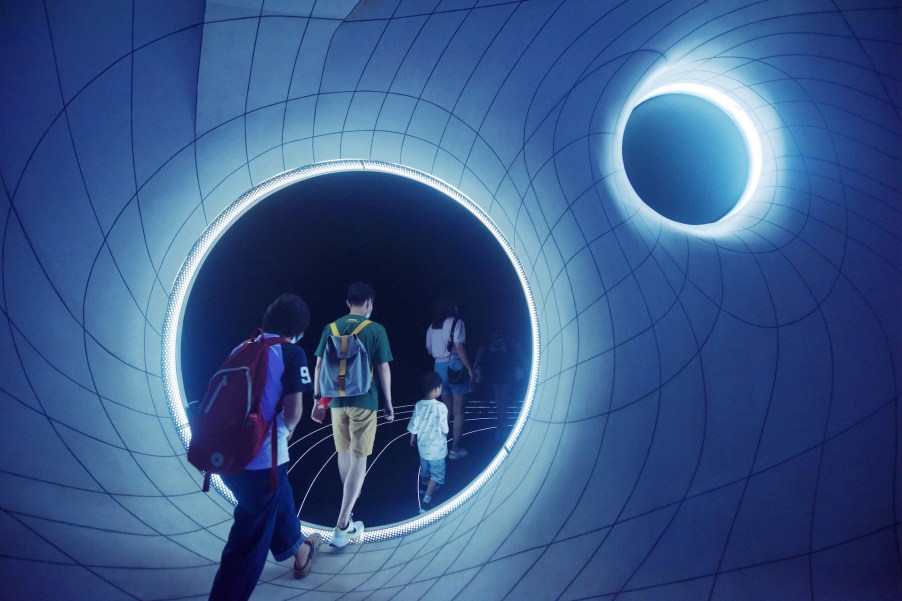
Forget SpaceX! Space Travel Through a Wormhole May Actually Be Possible
If you thought that SpaceX launching civilians into space was a cool idea, there’s a different type of space travel that’s even cooler – traveling through wormholes. Does that sound crazy? Maybe. But according to a recent study, it may actually be possible.
What is a wormhole?

Before we can understand the importance of this new theory, we must first understand what a wormhole is. According to the Jerusalem Post, “a wormhole is a hypothetical shortcut that could facilitate travel between two otherwise distant points in spacetime.” The idea of the wormhole was first proposed by Albert Einstein and Nathan Rosen, which is why wormholes are sometimes referred to as “Einstein-Rosen bridges.”
According to the famed scientists, a wormhole could theoretically be created by extending a black hole with its mirror image – a white hole. Live Science notes that “while black holes never let anything out, white holes never let anything in. To make a wormhole, you just take a black hole and white hole and join their singularities to create a tunnel through space-time.”
Upon creating this tunnel, you can then theoretically “jump” or travel from one point in the universe to another point in a very short amount of time. The length of time can vary depending on how long, or big, the wormhole is.
Wormhole travel sounds great, but there’s a catch

While traveling through space in the blink of an eye through a wormhole might sound great, there’s a catch. White holes – which may not even exist – are very unstable and they create forces that stretch out and even snap when the hole forms. Additionally, black holes aren’t exactly portals of smooth and safe travel either, as they can cause spaghettification, which is when your body – or anything else that goes through it – gets stretched into a thin ribbon.
“It’s one thing to have a black hole where space and time collapse on itself to a singularity, but what you now want is a hole in the fabric of space that remains open. The configuration of matter and energy to create a hole is unstable against collapse. A wormhole requires actively holding it (the fabric of space-time) up so that while you’re in there is doesn’t collapse on you.”
Neil DeGrasse Tyson, famed astrophysicist
As you can imagine, combining these two types of holes sounds about as stable as combining a tornado with a typhoon. However, Einstein and Rosen created their theory of the wormhole using the Schwarzchild metric which, according to Live Science, uses some “funky math” that shows that particles break down when they cross the event horizon of a black hole.
However, a physicist named Pascal Koiran, from Ecole Normale Supérieure de Lyon in France, tried examining wormholes using a different method known as the Eddington-Finkelstein metric. In a recent paper published in arXiv, Koiran found that by using this method, he was able to see the path of a particle traveling through a wormhole and coming out the other side in a finite amount of time. By using the Eddington-Finkelstein metric, Koiran’s theory shows that particles do not break up, or misbehave, at any point in the path through the wormhole.
Does this mean that wormholes are stable?
Not really. It basically means that there is a possibility that conjoining a black hole with a white hole may not be as unstable, or turbulent, as scientists once thought. If anything, they could be like cosmic yin and yang portals that stabilize when they join, as least that’s Koiran’s theory essentially eludes to.
Ultimately, it’s still all up in the air (pun intended) as to whether or not wormholes can exist. So don’t pack your bags yet, you may need wait a while until you can get to the next universe in the snap of a finger. For now, just hitch a ride with SpaceX, at least we know it exists.



